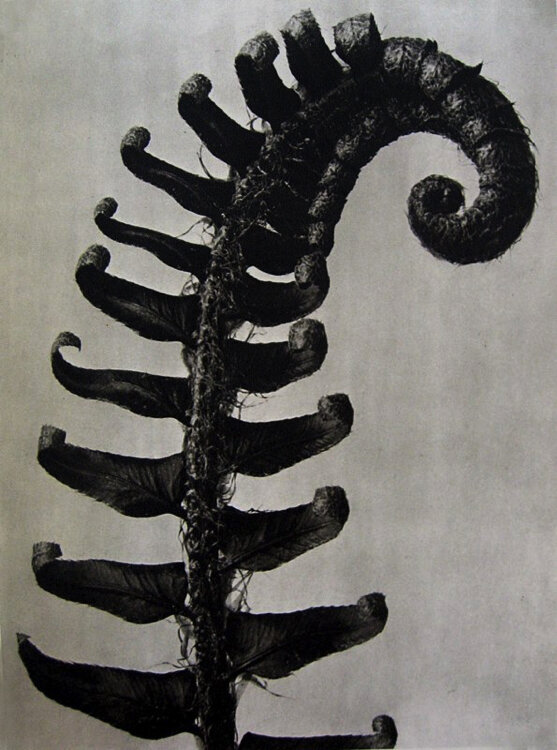KARL BLOSSFELDT
(1865 - 1932) b. Schielo, Germany
Karl Blossfeldt was born on June 13, 1865 in Schielo, a central German town within the Harz Mountains. At about sixteen, Blossfeldt started an apprenticeship that formed his basic understanding of visual arts, working as a caster in an ironworks foundry. Three years later he studied drawing at the Kunstgewerbemuseum’s education department in Berlin. In 1890 he was awarded a scholarship to assist in establishing basic course work for drawing classes using nature as a model. Blossfeldt began this project by systematically photographing plant forms in Italy. These images were later used in the classroom, by projecting them on the walls with slides.
In 1899 Blossfeldt became a permanent instructor at the Kunstgewerbeschule, where he taught “Modeling from Plants” for 31 years using the photographs he took in Italy or actual plant life.
Blossfeldt continued to photograph plant forms throughout his teaching career. In 1925 his work was represented by gallerist Karl Nierendorf and in 1928 a publication of his plant photographs, the first edition of “Urformen der Kunst” (Archetypes of Art) was published. This publication was so successful, a second edition was published within a year.
Shortly before his death, another book was published under the title, “Wundergarten der Natur.” Karl Blossfeldt died on December 3, 1932 in Berlin.
These photographs represent a new style of photography that abandoned the pictorial, painterly style of the time. The soft-focus style was replaced with sharp focus, using direct lighting. This approach was part of a new movement in art, the “neusachlichen” (New Objectivity) in Germany. Key photographers of this movement were August Sander, Albert Renger-Patzsch and Karl Blossfeldt whose common goal was to use the camera to its full advantage, documenting people and objects in the most authentic manner. This enabled the viewer to compare, analyze, and discuss variations, similarities, of form, texture, structure, and other characteristics of humans, architecture, and nature. These “typologies” are precursors of work by contemporary artists such as Thomas Ruff, Bernd & Hilla Becher, Günther Förg, Bernhard Prinz, and Thomas Struth (all are German artists).



